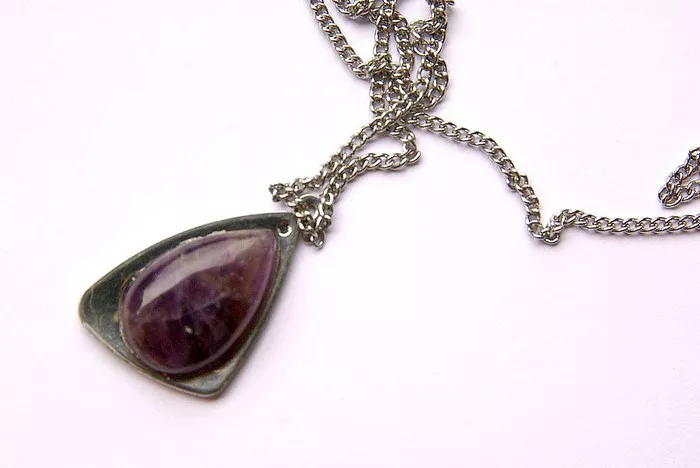Amethyst is a popular gemstone, a variety of quartz. When considering whether it can be placed in salt water, several factors need to be examined. Salt water, which contains dissolved salts such as sodium chloride (NaCl), can potentially interact with the amethyst in different ways compared to pure water.
Short – Term Effects
Physical Impact
In the short – term, placing amethyst in salt water may not cause immediate and drastic physical changes. Amethyst has a relatively high Mohs hardness of about 7, so the salt water is not likely to scratch or abrade the surface of the amethyst directly. The crystal structure of amethyst, which is trigonal in quartz, is relatively stable. However, if the amethyst has any pre – existing fractures or inclusions, salt water may seep into these small spaces. This could potentially lead to a change in the appearance of the amethyst in the areas where the water has entered. For example, if there are small air bubbles trapped in inclusions and the salt water displaces them, it might give a slightly different visual effect.
Chemical Reactions
Chemically, there is generally no significant reaction between amethyst and sodium chloride in salt water under normal short – term conditions. Amethyst is mainly composed of silicon dioxide (SiO₂), and sodium chloride does not react with this compound at normal temperatures and pressures. However, salt water may contain other substances in addition to sodium chloride. If there are small amounts of acids or other chemicals in the salt water, such as from pollution or impurities, they could potentially start to interact with the amethyst. For example, if there is a small amount of hydrochloric acid (HCl) in the salt water, it could begin to affect the surface of the amethyst over time.
Long – Term Effects
Dissolution of Impurities
Over the long – term, the presence of salt in the water can have an impact on the amethyst. If the amethyst contains impurities, the salt water may slowly dissolve or mobilize some of these impurities. Amethyst may have small amounts of other minerals or elements as impurities. For example, the iron that gives amethyst its purple color can be affected. If the salt water has a certain chemical composition that promotes the dissolution of iron – containing compounds, it could potentially lead to a change in the color of the amethyst over a long period. The color may become lighter or more faded as the impurities that contribute to the color are removed.
Cracking and Damage
Another long – term effect of salt water exposure is the potential for cracking. If salt water seeps into the small fractures or inclusions in the amethyst and then evaporates, it can leave behind salt crystals. When water evaporates, the salt is left behind and can expand as it crystallizes. This expansion can exert pressure on the crystal structure of the amethyst. Since amethyst is a brittle mineral, this pressure can lead to the formation of new cracks or the widening of existing ones. Over time, repeated cycles of salt water infiltration, evaporation, and salt crystal formation can cause the amethyst to break apart or at least become severely damaged.
Microbiological Activity
Salt water can also support microbiological activity. If there are microorganisms in the salt water, they may attach themselves to the surface of the amethyst. Some microorganisms can form biofilms on the surface of the stone. These biofilms can potentially affect the appearance of the amethyst, giving it a dull or slimy look. Moreover, the metabolic by – products of these microorganisms may also interact with the amethyst over time, potentially causing chemical changes on the surface.
Impact on Jewelry – Making and Value
Jewelry Integrity
For amethyst used in jewelry, salt water exposure can have implications for the integrity of the piece. If an amethyst in a ring or necklace is exposed to salt water frequently, and the salt water causes cracking or damage as described above, it can lead to the loss of the gemstone or at least make the piece look less appealing. The setting of the amethyst in the jewelry may also be affected. For example, if salt water seeps into the space between the amethyst and the metal setting, it can cause corrosion of the metal or loosening of the setting over time.
Value Considerations
The value of amethyst can be affected by salt water – related damage. A high – quality amethyst with good color and clarity that has been damaged by salt water exposure will be worth less than an undamaged specimen. In the case of antique or rare amethyst jewelry, salt water – induced damage can significantly reduce its historical and monetary value. Collectors and appraisers take into account the condition of the amethyst, and any signs of salt water damage are a negative factor when assessing the value.
Conclusion
While amethyst may seem relatively stable in salt water in the short – term, long – term exposure can lead to various effects such as impurity dissolution, cracking, microbiological growth, and these in turn can impact the appearance, integrity, and value of the amethyst, especially when it is used in jewelry. It is advisable to avoid exposing amethyst to salt water if possible.
Related topic:
- How Can You Tell if Amethyst Is Natural or Synthetic?
- Lighter Amethyst Vs Darker Amethyst :Which Is More Valuable?
- Amethyst vs. Quartz: A Detailed Comparison


